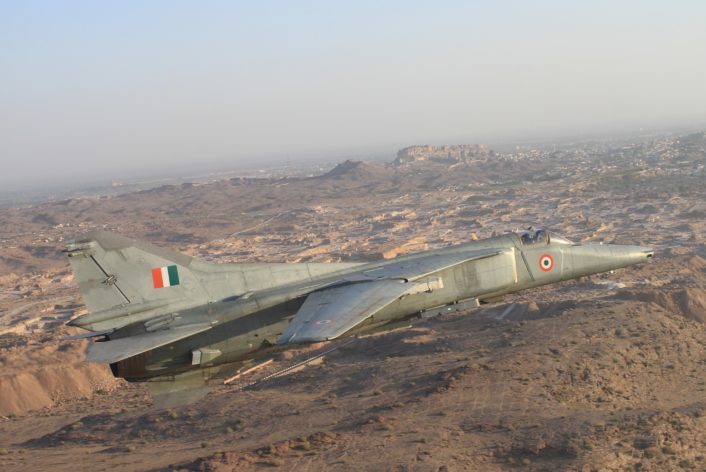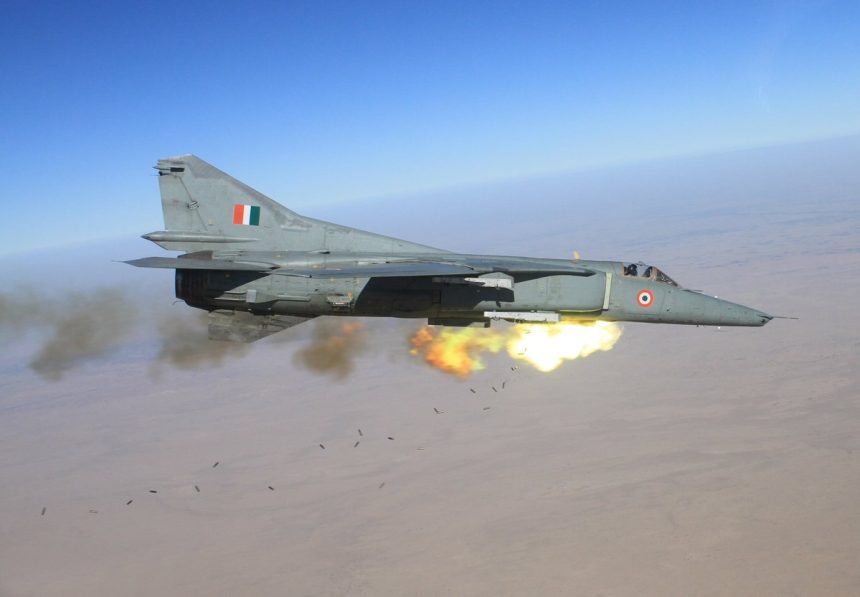IAF has retired its last “Swing-Wing” fighter.
The last Indian Air Force unit to be equipped with the MiG-27, the 29 Squadron / 32nd Wing based at Jodhpur AFS (Air Force Station) bid farewell to the jet during a ceremony held at Jodhpur, on Dec. 27, 2019. The last seven aircraft in service with the “Scorpions” squadron took part in a final flypast over the base.
Nicknamed “Bahadur” in India and designated “Flogger” by NATO, the MiG-27 is a variable-geometry ground-attack aircraft, originally built by the Mikoyan-Gurevich design bureau in the Soviet Union and later produced under license in India by Hindustan Aeronautics (HAL). It is based and quite similar to the Mikoyan-Gurevich MiG-23 fighter aircraft, but optimized for low-level flying and air-to-ground attack. Some 165 MiG-27s have served as fighter-bombers in the IAF for 35 years (86 of these aircraft were upgraded): the MiG-27MU retired today was the last Indian swing-wing jet, considered that older variants of the MiG-27s and the MiG-23 have already been withdrawn from active service for some time now.
The MiG-27 was a pretty basic airframe stripped out of the radar in favor of a revised nose for improved pilot front visibility (first introduced on the MiG-23B), and featuring a strong landing gear for operations from unimproved runways, fixed intake ramps and exhaust nozzles. Generally speaking, the aircraft was a really stable platform to carry out attacks with gun (the GsH-6-30), rockets as well as PGMs (Precision Guided Munitions) flying at low altitude. “It was a 20-tonne flying tank that could outrun a Mirage 2000D in low level,” said Squadron Leader Anshuman Mainkar (retired), an Indian Air Force MiG-27 veteran, in an interesting article published by NDTV.

The MiG-27 played an important role in the Kargil war, the conflict between India and Pakistan that took place between May and July 1999 in the Kargil district of Kashmir and along the Line of Control (LOC), during which it strafed high-altitude targets on mountain sides.
While not complex , the “Bahadur” was fairly difficult to fly, with a significant workload on the pilot in the cockpit. Many MiG-27s were lost by the IAF during more than three decades of service, including three in 2019: on Feb. 12, when a MiG-27MU went down near the Pokhran range in Rajasthan; on March 31, a when a MiG-27 crashed in a village in Sirohi in Rajasthan; and on Sept. 4, when a MiG-27 crashed near Jodhpur. In both cases the pilots ejected safely.









